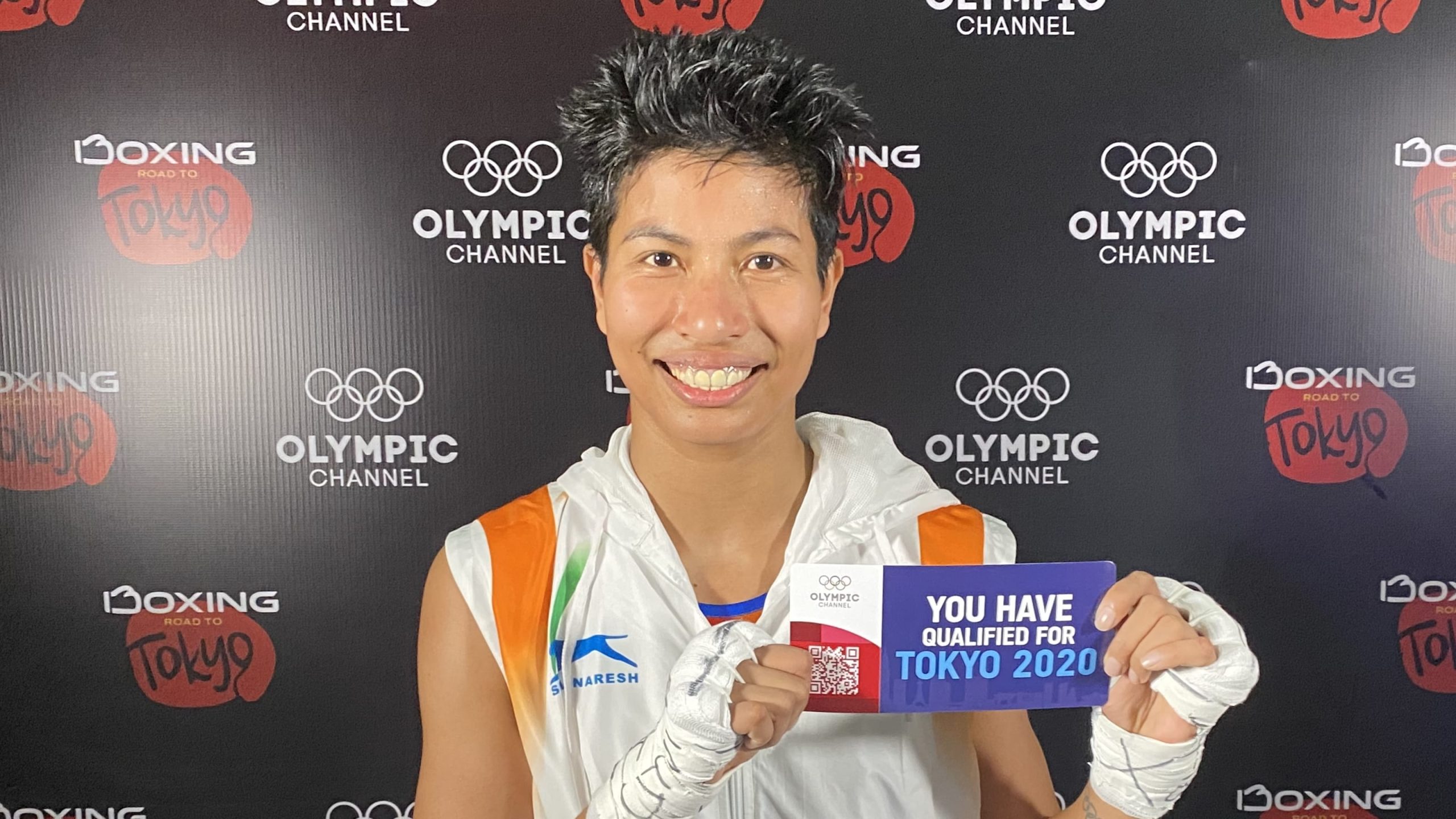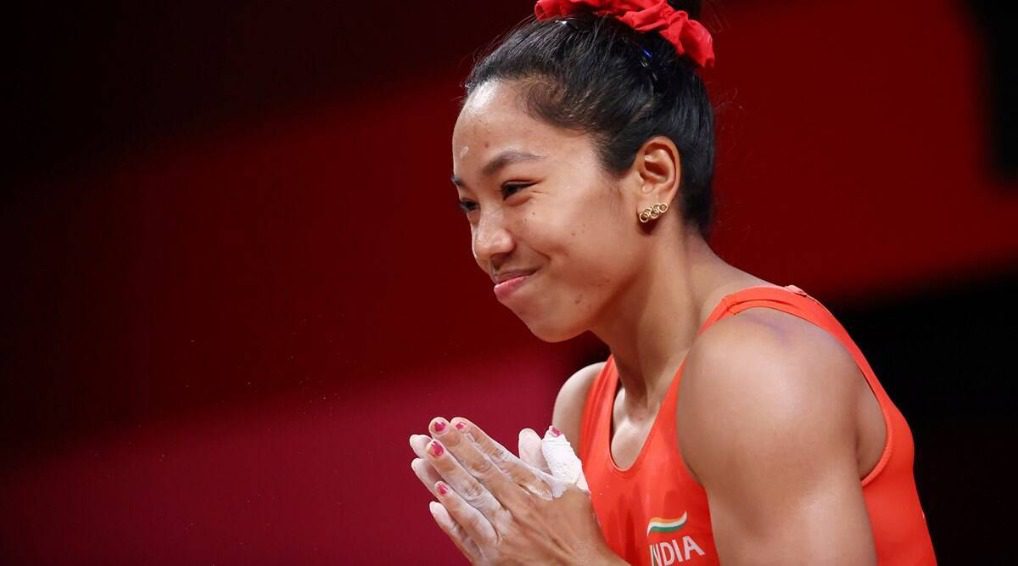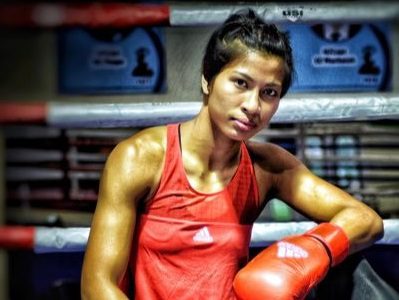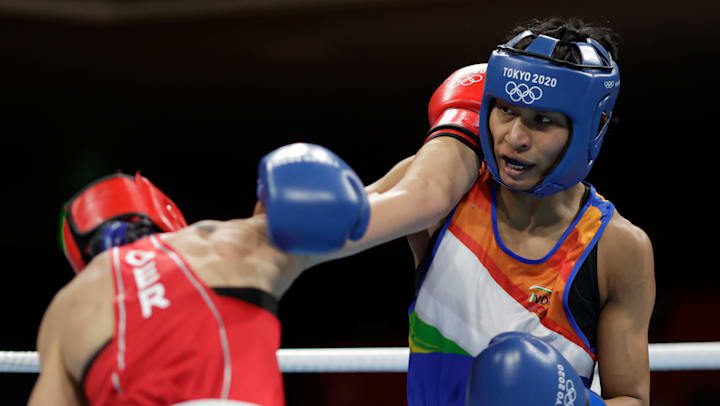(July 30, 2021; 5.30 pm) 2020 was a tough year for Lovlina Borgohain: First she couldn’t make it to the national camp due to her mother’s ill health and also had to help her father in the paddy fields. Secondly, she tested Covid positive hours before she was to board a flight to Italy for a training-cum-competition session sanctioned by the Sports Authority of India (SAI) for India’s elite boxers. Now, things are certainly looking up for this 23-year-old Assamese boxer as she has secured a medal for herself at the Tokyo Olympics.
Borgohain defeated world champion Taiwan’s Nein-Chin Chen in the quarter-final of the Women’s Welterweight, to advance to the semi-finals round, thereby securing a bronze for the country. She will be the third Indian boxer after Vijender Singh (2008) and MC Mary Kom (2012) to bag a medal at the Olympics for the sport. “She used her height very well. Her height is her biggest strength, as no other boxer in her category is as tall as her. It was also a mental battle for her because she had gone through a lot in the past one year. We want her to win the gold,” India’s women’s boxing coach Ali Qamar told India Today.
Finally congratulations India 🇮🇳 #lovlina #TeamIndia
— Vijender Singh (@boxervijender) July 30, 2021
This is a BIG punch ❤️
You continue to make us proud #LovlinaBorgohain and keep India’s flag high & shining at #TokyoOlympics2020.
Well done 👏 @LovlinaBorgohai pic.twitter.com/RYFACkNXUN
— Himanta Biswa Sarma (@himantabiswa) July 30, 2021
Before the Tokyo Olympics, Borgohain had lost to Chen four times. “It wasn’t about proving anything to anyone. I just had to prove it to myself,” Borgohain told reporters after the match. “I had lost to her four times before. This is where I could have taken my revenge. I had no strategy; I had decided to adapt according to the situation in the ring.”
Humble beginnings
Borgohain was born in 1997 in Baro Mukhia village in Assam’s Golaghat district, to Tiken and Mamoni; her father is a small-scale businessman and the family didn’t have the means to support the boxer’s ambition. She was 5-years-old when her father first showed her a clipping of Muhamad Ali – Borgohain was hooked. However, she first began training in muay thai like her sisters, who competed at the national level. She soon switched to boxing and was noticed in 2012 by coach Padum Boro at the SAI trials held at Barpathar Girls High School where she studied.

Lovlina Borgohain with her mother
Borgohain then went on to win bronze medals at the AIBA World Championships held in 2018 and 2019 before she made the cut for the Olympics quota in 2020. That same year she was also awarded the Arjuna award.
Against all odds
Last year, the SAI had sanctioned a 52-day Europe tour for the India’s elite boxers. But Borgohain was forced to forego the trip after she tested Covid positive hours before her flight to Italy for the training-cum-competition trip.
Though her training for the Olympics had been marred by personal problems, she ensured that it did not affect her performance at her maiden outing at the prestigious sporting event. Earlier this year, she had to take a break from the national camp to fly to Kolkata where her mother was undergoing a kidney transplant. Determined to win against all odds, she would train at home with a cylinder and promised her mother that she would return with a medal.

Lovlina Borgohain practising during the lockdown; Photo courtesy: India Today
Borgohain had begun her boxing training at Netaji Subhas Regional Centre in Guwahati in 2012. During the lockdown, when most other athletes used the time to upskill or relax, Borgohain focused on watching videos of her opponents. By the time she went to Tokyo she was well aware of their strengths and weaknesses; information that has held her in good stead.
What the medal means for Baro Mukhia
For the 2,000-odd residents of her village, a medal from Tokyo means the world. The villagers are hopeful that development will come their way like it did for the villages of Mary Kom and Hima Das after their international wins. Borgohain’s medal could mean the arrival of basic facilities such as piped water supply, healthcare facilities (their nearest hospital is 45 kilometres away) and a concrete road.
“I remember how in the village they would often pity my parents, with no sons and three daughters. My mother would always tell us to do something to prove the critics wrong, and we did. Both my sisters have jobs in the Central Industrial Security Force and Border Security Force, and I am a boxer,” she told The Indian Express after the Arjuna Award last year.
As she gears up for her next match against reigning world champion Turkey’s Busenaz Surmeneli on August 4, she is determined to win. She said, “Even if I break my hand, I have to fight, have to win.” And we sure hope she does.




